Donnelly Cycling may not be an altogether familiar name in the UK. We suggest you start getting used to it. They are huge in the States and we think they are going to become a household name over here before too long.
The Donnelly EMP
The EMP features the most aggressive tread in the Donnelly line-up. Be warned however, Donnelly’s ‘aggressive’ can seem quite tame when compared with something like the WTB Sendero. This is largely down to the fact that they have been designing tyres for their home turf, a whole hinterland of fast rolling hard pack and gravel roads. Wet mud just does not feature and the tyres have evolved accordingly.
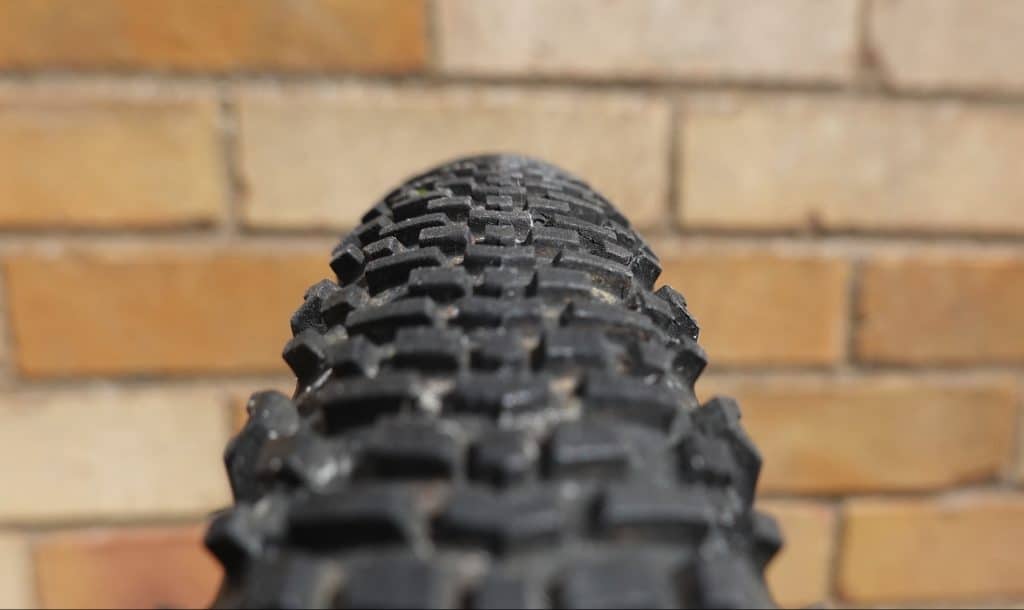
Fast rolling centre, safety blanket side knobs.
The tightly packed centre tread blocks are aligned in a v-formation for fast rolling, wider side-knobs offer a degree of cornering grip should things get rowdy.
Size Matters!
Currently the EMP is only available as a 700 x 38c, a sniff under the ubiquitous, and generally comfortable, 700 x 40 gravel tyre. It may not sound much but, when heading off road, you begin to appreciate the benefits that volume and lower pressures bring. For some of us, this may seem just too small but have no fear, it will soon be available in 700 x 45.
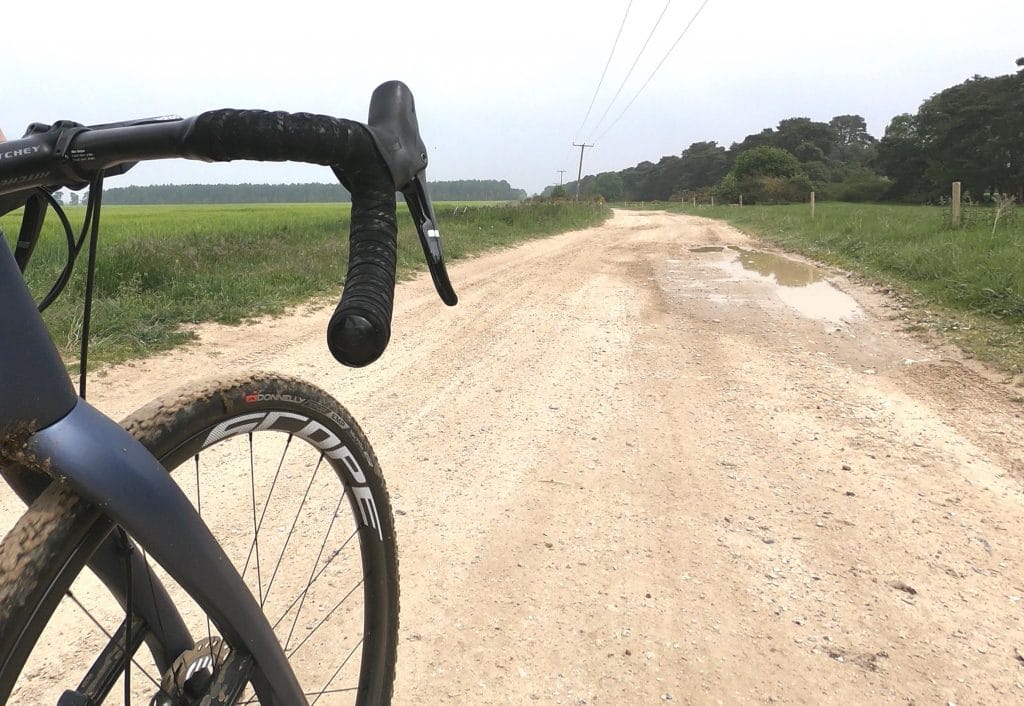
On wet surfaces the EMP will start to clog up.
Fitting
These tubeless ready examples of the Donnelly EMP were mounted to a pair of HUNT Gravel 30 carbon wheels and inflated first time with just a track pump. This is still a rare enough event to be noteworthy but thankfully, it is becoming increasingly common.
Aggro-Race
The Donnelly EMP 700×38 is not so aggressive that it will turn your gravel bike into a drop-bar MTB. Consider instead, the slender dimensions and fast rolling tread from a gravel racer’s perspective. Then you will understand what Donnelly mean by aggression.
Conceived as ‘the’ tyre to see a rider through the testing conditions of the Dirty Kanza, this is a no compromise racers tyre for flat out speed on fire road and hard pack trails. Weighing just 484 grams, the EMP is a fireroad missile. Stick to the main forest access roads or gravel and prepare to fly!
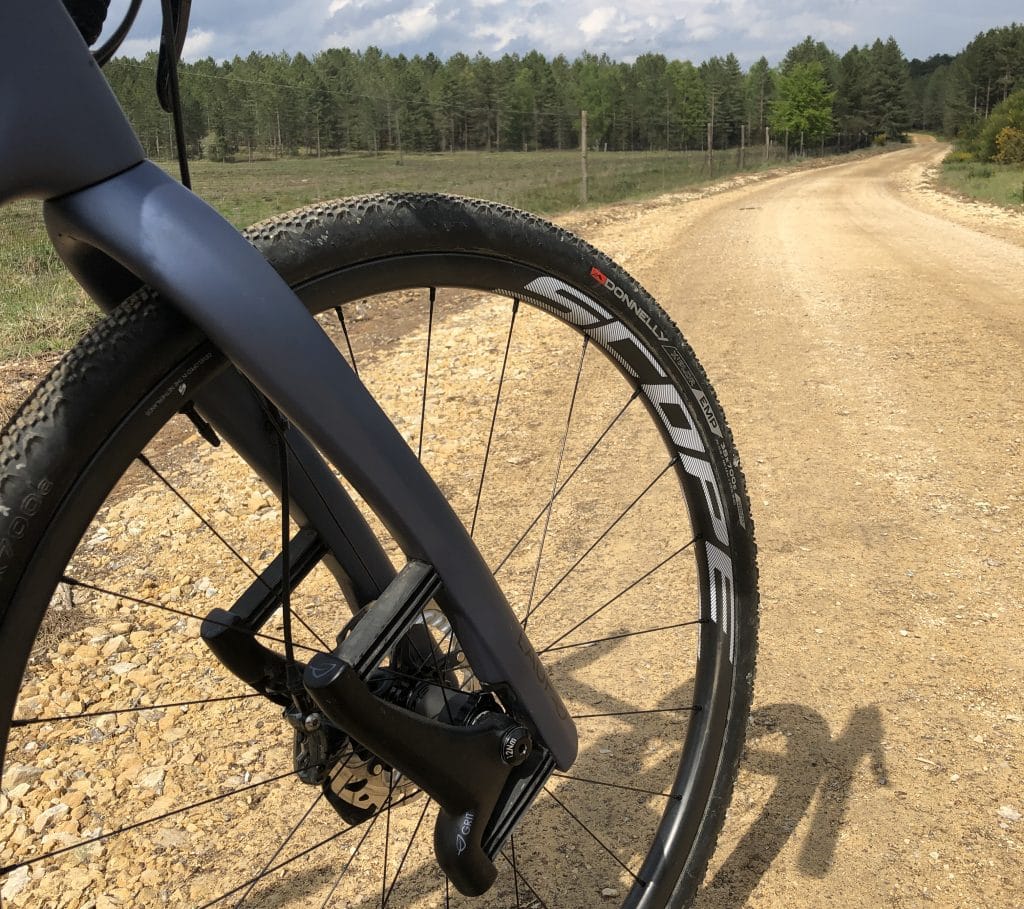
Fireroad Missile.
Chunkier surfaces, such as those huge limestone boulders found on some of the fireroads at Dirty Reiver this year, expose its limitations. Control was nigh on impossible and I was bounced off the road into the tender embrace of roadside foliage.
Performance in mud. The EMP makes no pretence at being a mud tyre. Once you encounter mud, it tends to build up on the tyre very quickly and before you know it, you will be dragging round two muddy cartwheels!
On the road, the tyre rolls well. I recently completed a 100k road ride (in a group) at an average 29kph without any particular issues. The EMP is not a road tyre but it should not hold you back!
Puncture Resistance
One of the main attractions of the EMP was the claim that they feature an ‘integrated puncture protection belt’.
As regular readers will know by now, Suffolk trails are littered with tiny flint daggers. Many a tyre has been torn to shreds and rendered useless much sooner than it should have. Tubeless sealant can only save you from so many battles and not many tyres are built to withstand the rigours of flint warfare. So how did the EMP fare?

3 months in. Looking a little careworn, but still puncture free.
During the 3 month test period, the EMP have survived numerous rides along ‘flint central’. I also emerged from the long, washboard, roads of the Dirty Reiver fully intact. To date then, the puncture belt has worked.
A feature of puncture protected tyres is often a harsh, or overly firm, ride. I am not sure what Donnelly have done, but the EMP is as supple as any tyre you could wish for.
Conclusion
The Donnelly EMP features an excellent, fast rolling tread. This is a tyre for people who want to travel far and fast with little consideration for comfort. Weights are respectable, especially when you factor in the puncture protection measures. You can trust the EMP not to leave you at the roadside fiddling with tubes.
If your riding generally revolves around fast fireroads, the EMP will be a rapid and reliable tyre.
While I have got on well with the 700×38, most people will get on better with the 700×45 when it arrives. Now if Donnelly stretched to a 650b variant too,then they might have cracked the ultimate dry weather tyre.
Last modified: 21st October 2020
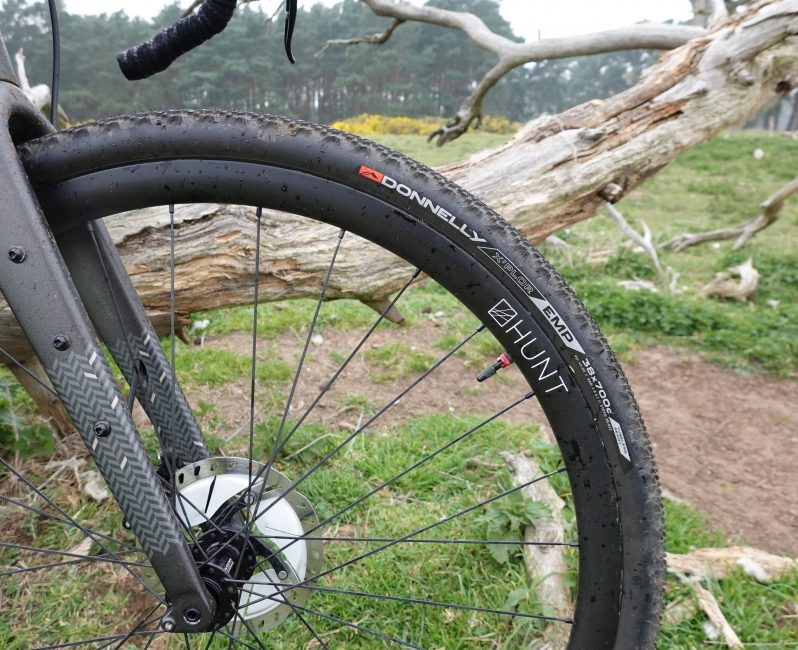
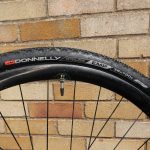












Whats the inteenal.width.width of the rims and what psi range have you been using?